#woman artist
Monday’s Much-loved Works of Art:
Ruby Loftus Screwing a Breech Ring by Dame Laura Knight
- Year: 1943
- Medium: Oil Painting
- Location: Imperial War Museum, London
Post link
Upside Down #4 by Leah Emery, 2014.
(Embroidery thread on Aida cloth.)
Perhaps not the most comfortable position to receive oral sex, but mainstream pornography skimps on cunnilingus and depictions of women’s pleasure in general, so we should be grateful for what we have, right?
Emery’s needlework reconstructs spam images she received while working as a video game developer.
I sought to utilize this predominantly phallocentric imagery through a medium that had its roots in feminine tradition to juxtapose the confrontational world of sex and smut with the graceful qualities of laborious and beautiful craft work. Topics of a sexual nature are still socially taboo, despite being a necessary component of human existence, particularly thanks to increasing internet censorship of seemingly benign material. To view my work is an invitation to voyeurism as the viewer is confronted with the unsettling experience of publicly looking at imagery that on face value should be consumed privately and secretly.
(Source)
If ever there’s a smutty remake of Bonnie and Clyde, I suspect the aesthetic will match Emery’s 2013 piece, Green Car.

Post link
The Tempest by Aleah Chapin, 2013.

I feel strongly that things should be real. I wanted to show a different way of seeing and to get at something universally human. A woman’s body is a map of her journey through life.
(Source)
Photograph of Chapin by Maria Teicher.
Post link
Cumulus by Russo-American artist Margarita Sikorskaia, 2009.
What do you see in the clouds?
The right answer is a bear about to pounce on a spawning salmon. Chinook, I think.
Post link





sketchbook stuff!
Aisha Galimbaeva / Айша Ғарифқызы Ғалымбаева, b. 1917, d. 2008
Self Portrait
Kazakhstan (1970)
[Source]
Wikipediasays:
Aisha Garifovna Galimbaeva is a Kazakhstani painter and educator. She is noted for her colourful and realstic depictions of women’s changing position in the Soviet Bloc in the mid-20th century.
Post link
Ma Qiusha / 马秋莎, b. 1982
Self Portrait Series
China (1999)
[Source]
Art Review Asiasays:
As a member of the first ‘one-child generation’, Ma expressed an artistic ‘sensitivity’ from a young age, evident in Self-portrait Series (1990–2000). Perhaps it is due to growing up in a one-child era, but everyone seems to be an only child, from playmates and classmates to adulthood friends. Combined with excessive doting, people of this generation seem to have adopted a more ‘perceptive’ radar. Ma’s works nearly always convey a subtle scepticism: multimedia, but imbued with a certain ‘soulfulness’. Regardless of whether the work is video, photography, installation, performance, event, painting, sculpture or any other media, there is always a ‘self-constructed mirror’ – the hidden mirror in self-portraits, the lens in various videos or even a window within a painting.
Post link
Samira Abbassy, b. 1965
Bird Garden with Intestinal Self Portrait
Iran (2003)
Acrylic, ink, gouache & collage on indian petal paper
Government art collection, London
[Source]
Samira Abbassy’s collage shows a female figure, her hair raised and her internal organs revealed in X-ray fashion. Her expression conveys what Abbassy describes as a state of rapture, as if in a meditative trance. Nearby are trees inhabited by colourful birds, with some of their patterns derived from Indian textile blocks. Inspired by ‘The Conference of Birds’, a 12th-century verse by the Persian poet Farid Al-Din Attar, Abbassy’s work depicts the physical and spiritual elements of human existence.
Post link
Lucy Tejada, b. 1920, d. 2011
Self Portrait
Colombia (1952)
Oil on card
[Source]
Wikipediasays:
Lucy Tejada Saenz was a Colombian contemporary painter… Her characters, imaginary beings of black and deep eyes live in her paintings, that resemble his world; a beautiful ideal world, inhabited only by women and boys. The artistic legacy is a trip by a world knitted of dreams, evocations and original proposals.
Post link
Susan Hefuna, b. Germany, 1962
Woman behind Mashrabiya
Egypt (1997 and 2004)
C-print mounted behind Plexiglas
[Source]
Brooklyn Museumsays:
Born into a mixed Muslim/Christian, German/Egyptian dual family in 1962, Hefuna’s cross-cultural heritage is shared through her energy as a multimedia professor in Stuttgart, Cape Town and Cairo…
Her interest then lies in transcending labels, and in creating art that is spiritual, timeless, open-ended, one that overcomes boundaries, categorization and cliche’s. This is seen most clearly in her photographic series, which conjure up a distant world of colonial Egypt, scenes of everyday ordinariness made exotic.
Hefuna’s photographs invite the viewer to look through the mashrabia windows that serve the privacy of women in their household. A meeting point between liberal and conservative cultures as the speculator dares to looks inside. Images of Cairo today appear grainy and rudimentary, as if pictured at the birth of photography itself. Cityscapes are inexplicably printed in negative, whilst others taken of architectural detail on the streets of Cairo resemble the early darkroom experiments of Man Ray.
Post link
Liliana Maresca, b. 1951, d. 1994
Autorretrato con bronca / Self Portrait with Brawl
Argentina (1982)
Synthetic enamel on wood
Location unknown
[Source]
Museo de Arte Moderno de Buenos Airessays:
Maresca was one of the most active figures in the construction of an interdisciplinary artistic community that began as an underground towards the end of the military dictatorship. Her work was a critical response to the central problems of society, the political situation in the country and HIV, which affected her personally.
With overwhelming energy, she sought to expand the frontiers of art, blurring boundaries, categories and disciplines and confronting the socio-political situation. In addition to encouraging the rebuilding of the democratic community, she was able to capture and transmit – like a powerful antenna – the most central and urgent aspects of a tumultuous social situation. Her artistic practice ranged from addressing themes such as intimate political manifestos about the body, love and sexuality to social violence in Argentina and overseas.
Post link
Amy Lee Sanford, b. USA, 1972
Full Circle
Cambodia (2012)
Durational performance
[Source], [Source]
Roger Nelson writes for The Advisor:
Full Circle is an unusual artwork: a durational performance piece which will challenge and transfix both artist and audience. For six consecutive days, Amy Lee Sanford will sit amid a circle of 40 Kompong Chhang clay pots. Slowly and deliberately, she will break one pot by dropping it on the floor. She will then gather the pieces and meticulously glue the pot back together, binding the fragments with string and returning the remade pot to the circle. Over six days, all 40 pots will be broken and remade in this way.
“I create art in order to observe, examine and transform the lasting effects of war, including trauma, loss, displacement and guilt,” Sanford explains. The repetitive process of breaking and remaking the pots, mesmerising in itself, is also richly allegorical of ways in which Sanford – like countless Cambodians – has had to reconstruct her understandings of her life and family.
Raised in the US by her Swedish-American adopted mother, she was the only Asian in her neighbourhood. “My father wrote frequent letters to my mother and me, but after April 17 1975, the letters stopped coming… After many months, and ultimately years of silence from his end, my mother made the painful deduction that he had been murdered by the Khmer Rouge, especially since my father was a known intellectual and educator. I grew up with the belief that all of my family had been killed during the Khmer Rouge era, and that I was the only surviving member of my bloodline. After only 13 years of life with my (adopted) mother, she died suddenly when I was 15. That loss
the first time in 30 years, to meet my uncle and cousins. The three- week whirlwind visit was exciting, exhilarating, and exhausting.” Full Circle is not the first of Sanford’s works to address the cycles of trauma in both her personal biography and the nation’s history,but it is the first in this radical format.
Post link
Djanira, b. 1914, d. 1979
Self Portrait
Brazil (undated)
[Source]
Wikipediasays:
Djanira da Motta e Silva was a Brazilian painter, illustrator and engraver, known by her first name Djanira. She was known for her naïve art paintings, depicting Brazilian common people, religious themes and landscapes.
Post link
S. Ayesha, b. 1981
Dreamgirl
Flower Child
Ms India
Yveve and the Bad Apple
Ambika
Miss Fortune
Tobeone
India (2007-08)
[Source]
I AM NOT A PAINTER. I AM A GRAPHIC ARTIST. I LIKE TO EXPERIMENT. I LIKE TO PLAY. I LIKE TO DISREGARD RULES (ESPECIALLY SOCIAL RULES). I LIKE HIDDEN MESSAGES. I LIKE BIG. I LIKE TO CUT PAPER AND DECONSTRUCT MATERIALS WHICH I USE TO RECONSTRUCT IDEAS AND ART. I LIKE TO COLOUR MANICALLY, IT SOOTHES ME. I LIKE PENS, NOT PAINT. I LIKE TO STAND IN FRONT OF PROJECTORS. I LIKE JUNK. I LOVE TO CREATE CHAOS. I USE LINES AND SYMMETRY TO GIVE ORDER. I ADD PATTERNS FOR MOVEMENT. I LIKE TO USE ICONS THAT INSPIRE ME.
I LIKE TO USE LOTS OF NEW MEDIA AND TECHNOLOGIES - XRAYS, PHOTOSHOP, FRACTALS, DIGITAL PHOTOGRAPHS, PROJECTORS, COMMERCIAL PACKAGING, INTERNET, TRANSPARENCIES WITH GLASS PAINT, REFLECTIVE MATERIALS, HOLOGRAPHIC PAPER, HANDMADE PAPER, ACRYLIC PLEXIGLASS. WITH THESE MATERIALS, I CREATE LARGE COLLAGES OF ALL THE CRAZY & BEAUTIFUL EXPERIENCES IN MY LIFE.
THESE WORKS TITLED UNDER THE BANNER OF – DIFFERENT FACES OF S.AYESHA, IS A CONTINUATION TO A SOLO SHOW THAT WAS HELD IN NEW DELHI IN MAY 2007. THE CONTENT OF THE WORK – IS ABOUT ME – MY FEELINGS, DREAMS, IDEAS, FANTASIES AND EXPERIENCES THAT I HAVE HAD. LIKE A PERSONAL DIARY, MY WORK REFLECTS THE DIFFERENT ASPECTS OF MY LIFE AND THE DIFFERENT FACES I CARRY. IN ESSENCE, THESE ARE ALL SELF PORTRAITS.
Post link
Keiko Minami / 南桂子, b. 1911, d. 2004
Poppies with Butterfly and Self-Portrait
Japan (undated)
Watercolour and blue pastel
National Gallery of Art, Washington DC
[Source]
Wikipediasays:
Keiko Minami was a Japanese artist, aquatint engraver, and poet… In the late 1950s, Minami’s works were reproduced and sold as greeting cards by both the Museum of Modern Art and UNICEF. In 1959 she was named as an official artist of the United Nations.
Post link


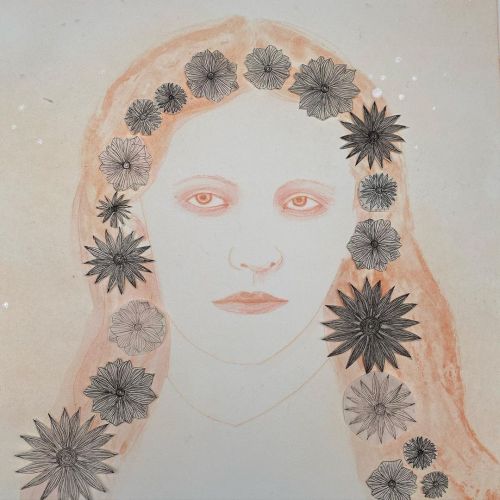

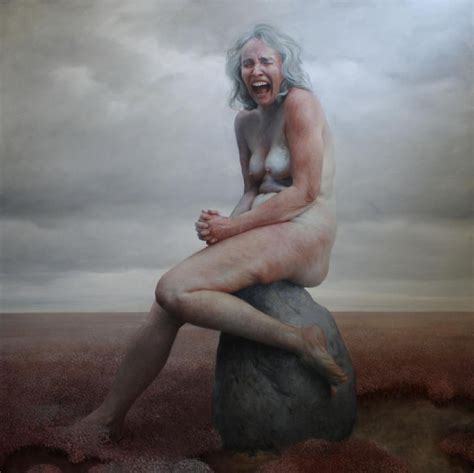
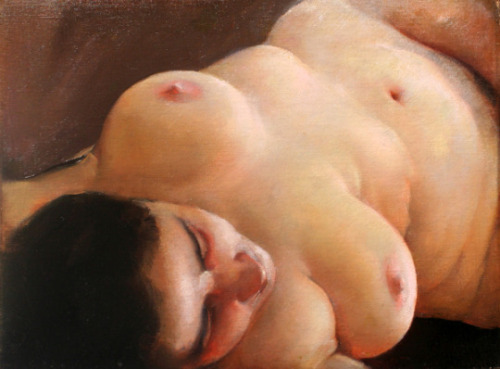
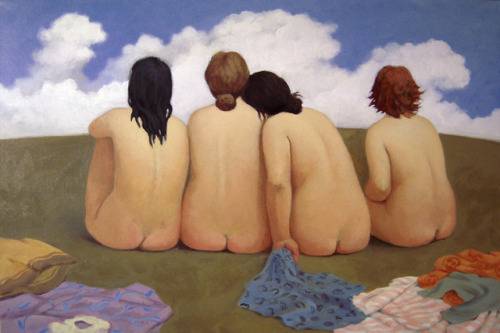
![Aisha Galimbaeva / Айша Ғарифқызы Ғалымбаева, b. 1917, d. 2008Self PortraitKazakhstan (1970)[Source] Aisha Galimbaeva / Айша Ғарифқызы Ғалымбаева, b. 1917, d. 2008Self PortraitKazakhstan (1970)[Source]](https://64.media.tumblr.com/30601c252398d6e49a254e7718dbec43/tumblr_pcl1f1EOAK1ug5xwdo1_500.jpg)
![Ma Qiusha / 马秋莎, b. 1982Self Portrait SeriesChina (1999)[Source]Art Review Asia says:As a member of Ma Qiusha / 马秋莎, b. 1982Self Portrait SeriesChina (1999)[Source]Art Review Asia says:As a member of](https://64.media.tumblr.com/6e5ba6de1ef281c9d4c77761a1c31964/tumblr_pck0mlaR0o1ug5xwdo3_500.jpg)
![Ma Qiusha / 马秋莎, b. 1982Self Portrait SeriesChina (1999)[Source]Art Review Asia says:As a member of Ma Qiusha / 马秋莎, b. 1982Self Portrait SeriesChina (1999)[Source]Art Review Asia says:As a member of](https://64.media.tumblr.com/51250268c2a3e2f2891bd8f50f015cec/tumblr_pck0mlaR0o1ug5xwdo5_500.jpg)
![Ma Qiusha / 马秋莎, b. 1982Self Portrait SeriesChina (1999)[Source]Art Review Asia says:As a member of Ma Qiusha / 马秋莎, b. 1982Self Portrait SeriesChina (1999)[Source]Art Review Asia says:As a member of](https://64.media.tumblr.com/5c55f2afced100302afccf3327e489bc/tumblr_pck0mlaR0o1ug5xwdo6_500.jpg)
![Ma Qiusha / 马秋莎, b. 1982Self Portrait SeriesChina (1999)[Source]Art Review Asia says:As a member of Ma Qiusha / 马秋莎, b. 1982Self Portrait SeriesChina (1999)[Source]Art Review Asia says:As a member of](https://64.media.tumblr.com/40b58bccd2bacf30cb3d4d77eddbdd5b/tumblr_pck0mlaR0o1ug5xwdo1_500.jpg)
![Ma Qiusha / 马秋莎, b. 1982Self Portrait SeriesChina (1999)[Source]Art Review Asia says:As a member of Ma Qiusha / 马秋莎, b. 1982Self Portrait SeriesChina (1999)[Source]Art Review Asia says:As a member of](https://64.media.tumblr.com/f507d6624d88d3c0330e11333ac2367e/tumblr_pck0mlaR0o1ug5xwdo4_500.jpg)
![Ma Qiusha / 马秋莎, b. 1982Self Portrait SeriesChina (1999)[Source]Art Review Asia says:As a member of Ma Qiusha / 马秋莎, b. 1982Self Portrait SeriesChina (1999)[Source]Art Review Asia says:As a member of](https://64.media.tumblr.com/b126263c5354bfff431b7ea3daaff869/tumblr_pck0mlaR0o1ug5xwdo2_500.jpg)
![Varditer Karapetyan / Վարդիթեր Կարապետյան, b. 1927, d. 2014Self PortraitArmenia (1970)[Source]She’s Varditer Karapetyan / Վարդիթեր Կարապետյան, b. 1927, d. 2014Self PortraitArmenia (1970)[Source]She’s](https://64.media.tumblr.com/f18a77f1701463a6242b25d672b04f85/tumblr_pcaue5tC0f1ug5xwdo1_500.jpg)

![Lucy Tejada, b. 1920, d. 2011Self PortraitColombia (1952)Oil on card[Source]Wikipedia says:Lucy Teja Lucy Tejada, b. 1920, d. 2011Self PortraitColombia (1952)Oil on card[Source]Wikipedia says:Lucy Teja](https://64.media.tumblr.com/96489997f9f5ebda66c0ea8ddf4be30d/tumblr_pcb203gFlX1ug5xwdo1_400.jpg)



![Amy Lee Sanford, b. USA, 1972Full CircleCambodia (2012)Durational performance[Source], [Source]Roger Amy Lee Sanford, b. USA, 1972Full CircleCambodia (2012)Durational performance[Source], [Source]Roger](https://64.media.tumblr.com/443b3502bcdae2aba4a9e1473b7f24be/tumblr_pc8akga0ih1ug5xwdo1_r1_500.jpg)
![Amy Lee Sanford, b. USA, 1972Full CircleCambodia (2012)Durational performance[Source], [Source]Roger Amy Lee Sanford, b. USA, 1972Full CircleCambodia (2012)Durational performance[Source], [Source]Roger](https://64.media.tumblr.com/7a33302e529a73cff9406552c8b13efe/tumblr_pc8akga0ih1ug5xwdo3_r1_500.jpg)
![Amy Lee Sanford, b. USA, 1972Full CircleCambodia (2012)Durational performance[Source], [Source]Roger Amy Lee Sanford, b. USA, 1972Full CircleCambodia (2012)Durational performance[Source], [Source]Roger](https://64.media.tumblr.com/ce7b6e26dc795407e96ee3b628506c69/tumblr_pc8akga0ih1ug5xwdo2_r1_500.jpg)
![Amy Lee Sanford, b. USA, 1972Full CircleCambodia (2012)Durational performance[Source], [Source]Roger Amy Lee Sanford, b. USA, 1972Full CircleCambodia (2012)Durational performance[Source], [Source]Roger](https://64.media.tumblr.com/22aa74029cecbcc3f30ffb18be85462b/tumblr_pc8akga0ih1ug5xwdo4_r1_500.jpg)
![Djanira, b. 1914, d. 1979Self PortraitBrazil (undated)[Source]Wikipedia says:Djanira da Motta e Silv Djanira, b. 1914, d. 1979Self PortraitBrazil (undated)[Source]Wikipedia says:Djanira da Motta e Silv](https://64.media.tumblr.com/b36987ea828c99ec31edd722b7667900/tumblr_pc6ype8TZf1ug5xwdo1_400.png)

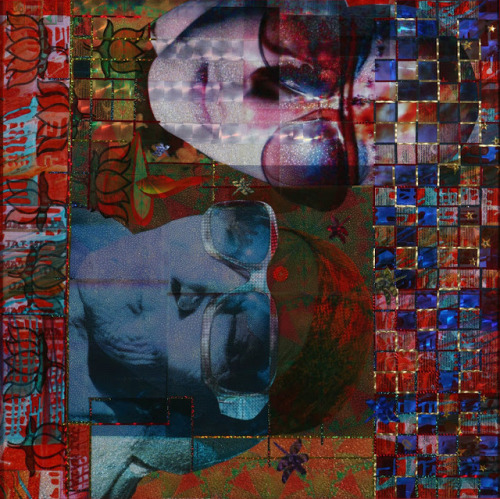




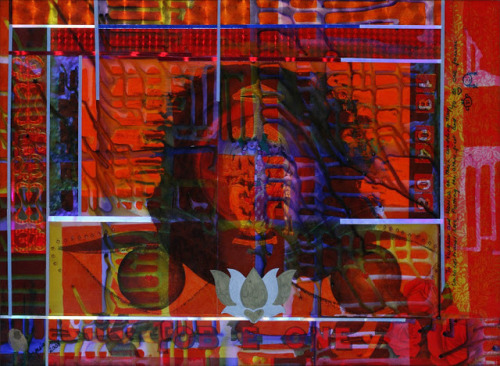

![Tatyana FadeevaSelf-PortraitUzbekistan (2016)Oil on canvas[Source]There’s a CV of the artist here! Tatyana FadeevaSelf-PortraitUzbekistan (2016)Oil on canvas[Source]There’s a CV of the artist here!](https://64.media.tumblr.com/4c4d855504553fe905884cdc66957259/tumblr_pc3krqpNSm1ug5xwdo1_500.jpg)